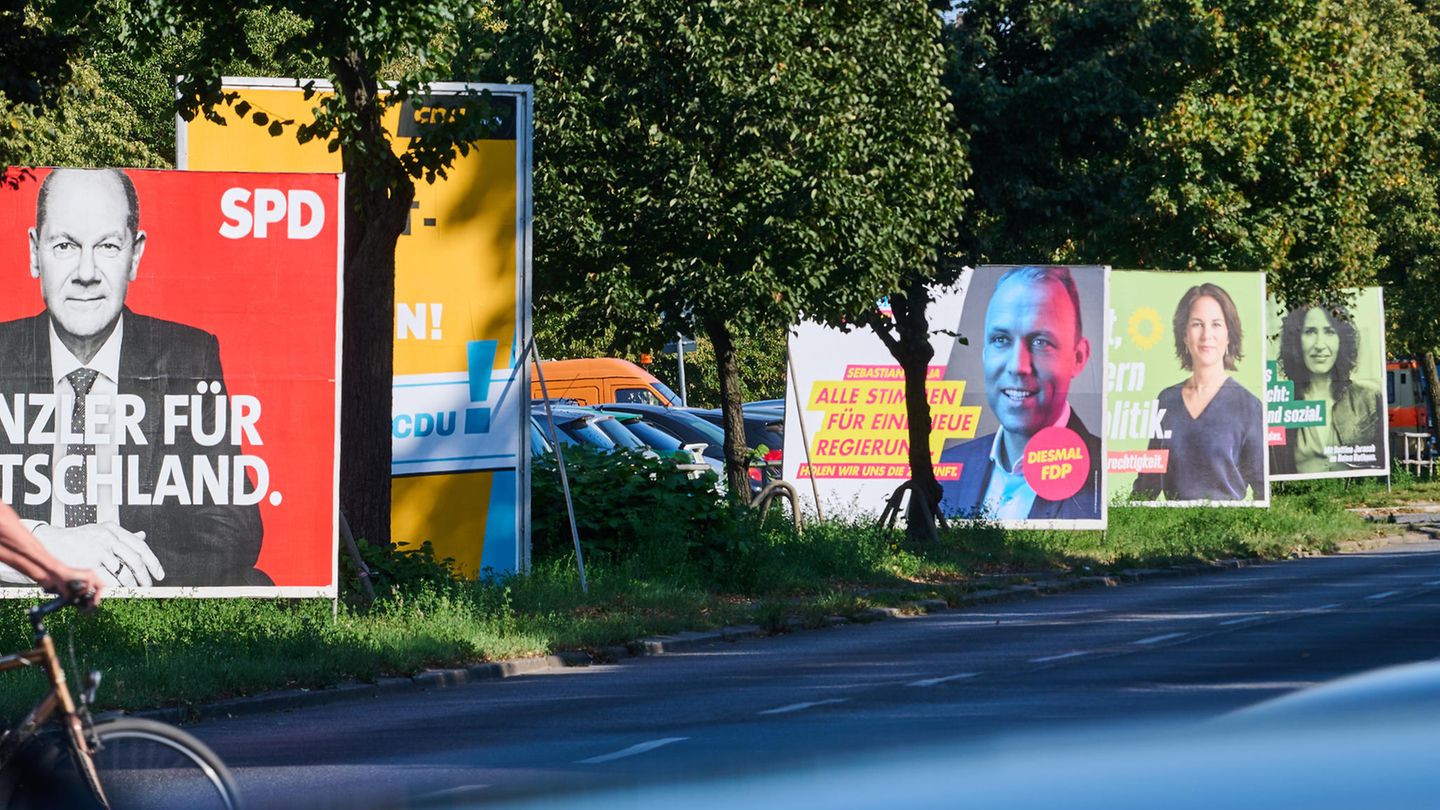The polls for the Union and Armin Laschet are not looking good. Nevertheless, the top man can have hope: Because the SPD’s lead is in the area of fault tolerance. This and other points about the cross with election research.
When the candidate stepped in front of the cameras on the evening of September 22nd, he did so with the smile of the winner: “The Union – we have won the election. The big center party is back,” said Edmund Stoiber, despondent and triumphant. Behind the joy there was also a good portion of surprise, because hardly any of the large survey institutes had foreseen the success of the CDU / CSU. With the exception of Allensbach, the opinion polls saw red / green in front in 2002 – and they were right. When the majority of the votes were counted around midnight, there were signs that the supposed winner, Edmund Stoiber, would not become Federal Chancellor.
SPD with 6000 votes more than the Union
In the end, just 6,000 votes separated the SPD from the Union, which corresponded to an increase of 0.01 percent – Forsa, Insa and Co. had estimated the lead of the ruling party at the time to be significantly greater. A new Bundestag will be elected on September 26, 2021 and the scenario from 19 years ago could repeat itself. Although the two big parties are far from the 38.5 percent share of the vote from back then, it is not so unlikely that the Union and Social Democrats will reach the finish line on an equal footing.
In the current polls on the Sunday question, the SPD is consistently in the lead. Six percentage points in the best case (Emnid), two in the worst (Allensbach, GMS), an average of 3.87 percentage points. That sounds clearer than it actually is. Because surveys are getting shakier, the closer the race is – such as in the Brexit vote in 2016 or. Complaints about allegedly “false” polls have since become routine in almost every post-election reporting. Like most recently in the state elections in Saxony-Anhalt, where there was a big gap between opinion polls and reality.
A few points help to better assess the informative value of surveys:
First of all: surveys are neither forecasts nor elections, but only snapshots of a mood. Not even all population groups are necessarily surveyed and they also show a tolerance for mistakes. In other words: the tendency of journalists to formulate a headline from the result of a current, but only one, survey can create a skewed picture. In addition, most of the major media collaborate with a survey institute and prefer its results: RTL / n-tv (which like the stern belong to Bertelsmann) with Forsa, the “Frankfurter Allgemeine Zeitung” with Allensbach, the ZDF with the research group Wahlen and the “Bild” newspaper with Insa.
- Static fault tolerance: Errors creep in with every survey, which vary depending on the size of the party. Put simply, the statistical error tolerance for larger parties is between 2.5 and 3 percentage points, for smaller parties between 1.5 and 2 percentage points. Specifically: The SPD’s actual lead over the Union could possibly only be around one percent.
- Type of polls: There are essentially three methods of ascertaining people’s voting behavior: over the phone, face-to-face and online. Each variant has weaknesses, which is why some institutes combine the methods. In the US election campaign it was shown that surveys via the Internet are the least accurate because a click is made quickly, but there is no social interaction. Direct conversations, for example over the phone, are usually more precise, but some population groups (less well-educated, only cell phone users, “media skeptics”) cannot be reached in this way, or only poorly.
- Representation: Most survey institutes add a footnote to their results: “representative survey”. Sounds good, but doesn’t necessarily say anything. Because the term “representative” is not clearly defined and only has something to do with the number of respondents to a limited extent. In general, the following applies: the more participants, the more precisely, but only if, in the best case, the respondents are selected in the same proportion to the population groups. Difficulties are caused by the fact that the still prevailing landline surveys reach an above-average number of older people and that some people do not take part in surveys at all. On average, just every fifth voter contacted takes part in the survey.
- Kind of answers: Not everyone likes to provide information about their party preferences or their voting behavior, while others have not yet given a precise thought to their ticks – nevertheless, they take part in surveys and distort the result with their (wrong) answers. In this context, there is sometimes talk of “socially desirable” information, mostly in connection with the election of extreme parties such as the AfD. The poll results of the right-wing populists often deviate particularly noticeably from the actual performance. AfD supporters would be reluctant to admit to pollsters that they want to vote for right-wing populists, is a popular thesis. Whether this is true has not yet been conclusively clarified. What is certain, however, is that the AfD, as a relatively young party, lacks long-term comparative data with which the statements can be better weighted and thus made more precise.
- Special features such as postal voting: It is still unclear whether the increasingly popular postal vote has an impact on the quality of the surveys. The Forsa Institute is currently arguing with the Federal Returning Officer about the publication of the voting behavior of postal voters. Forsa also asks in its surveys whether someone has already voted by letter and if so, who. The answers flow into the survey results, but are not shown separately. From the point of view of the Federal Returning Officer, the publication constitutes a violation of the Federal Election Act “if postal voters are asked not only about their intention to vote, but also about their voting decision”. The Hessian Administrative Court in Kassel will decide on the lawsuit before the general election.
Demoscopes who are always right
By the way, there are researchers who can actually use their work to precisely predict the outcome of elections. At least in the US. The Washington historian Allen Lichtman correctly predicted the outcome of all presidential elections since the 1980s. His method differs from that of other demoscopes: Lichtman uses a standardized catalog to ask about the general mood, his 14 questions have proven to be an extremely effective tool. David Lauter from the University of Southern California works in a similar way. For years, he asks about the mood in a fixed group of participants – and in this way predicted the victory of Donald Trump in 2016 fairly accurately. As one of the very few opinion polls back then.
sources: “”, “Fivethirtyeight”, “”,,, DPA, AFP
David William is a talented author who has made a name for himself in the world of writing. He is a professional author who writes on a wide range of topics, from general interest to opinion news. David is currently working as a writer at 24 hours worlds where he brings his unique perspective and in-depth research to his articles, making them both informative and engaging.




